Scientists recommend restoring the calamitous clearings through the preparatory forest
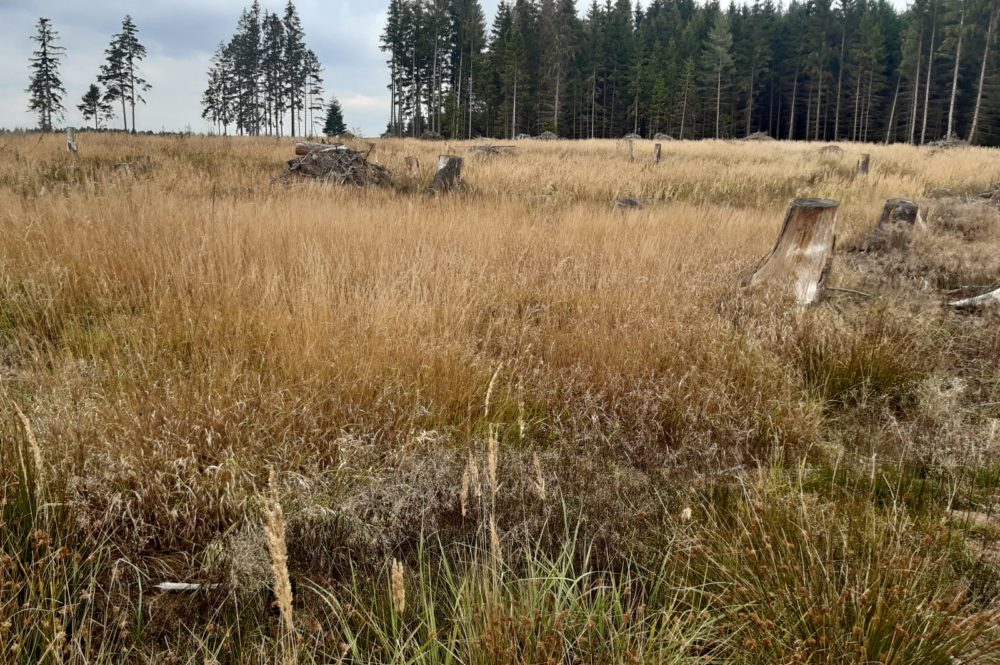 The dominant method of regenerating forests in areas that have been affected by disasters is through the artificial planting of target tree species, sometimes in combination with natural regrowth. However, trees planted directly in these areas often face challenges such as high mortality and slow growth due to harsh environmental conditions. Scientists are suggesting an alternative approach to forest restoration through the establishment of a preparatory forest.
The dominant method of regenerating forests in areas that have been affected by disasters is through the artificial planting of target tree species, sometimes in combination with natural regrowth. However, trees planted directly in these areas often face challenges such as high mortality and slow growth due to harsh environmental conditions. Scientists are suggesting an alternative approach to forest restoration through the establishment of a preparatory forest.
Photo: Grassed calamitous clearing, where restoration will be difficult, FGMRI (VÚLHM) archive
After a disaster, the one-time effort to clear the affected area often results in large stands of trees that are all the same age and height. This lack of diversity can lead to unstable and unhealthy forests, especially in the face of future climate changes and the potential for more disasters.
On the other hand, a prolonged delay in forest restoration raises the risk of creating bare areas that are difficult to regenerate. This is due to adverse microclimates, significant soil disturbance, upper soil layer moisture, and other unfavourable conditions. These challenges persist despite potential production losses and environmental consequences. Restoring these cleared areas typically demands long-term care and substantial costs.
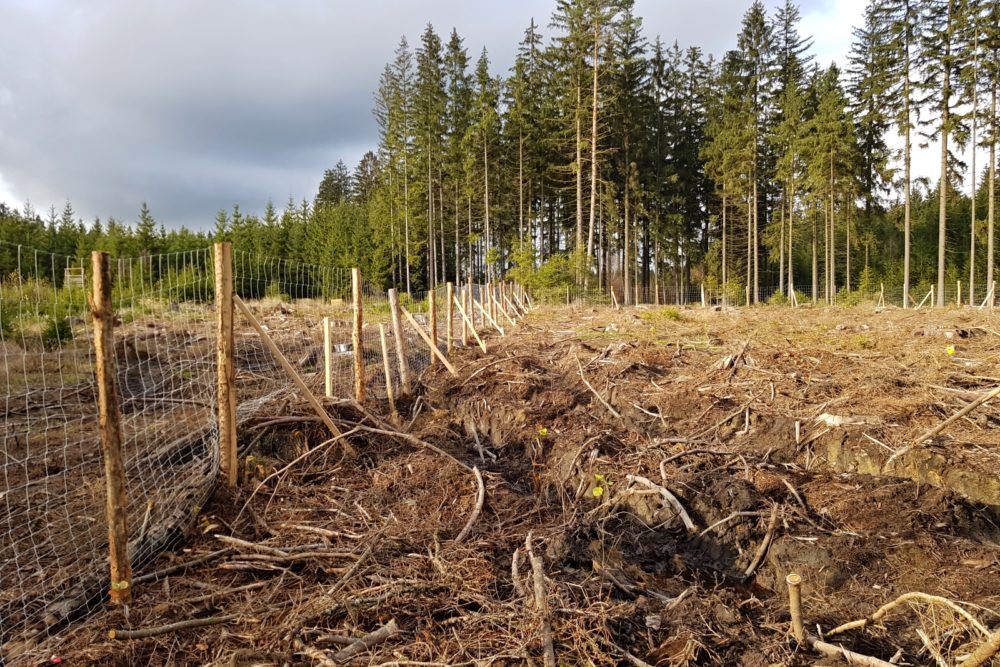 Photo: Forest fence, preparation for afforestation, FGMRI (VÚLHM) archive
Photo: Forest fence, preparation for afforestation, FGMRI (VÚLHM) archive
However, there are more beneficial alternatives to these regeneration procedures. As a result, scientists from the Opočno Research Station, FGMRI (VÚLHM, v. v. i.), have developed a certified methodology for regenerating disaster clearings through the establishment of preparatory forests (Obnova kalamitních holin přes přípravný les). The methodology was created during the NAZV project QK21020307 “Optimization of cultivation procedures for the adaptation of forest ecosystems to climate change“(„Optimalizace pěstebních postupů pro adaptaci lesních ekosystémů na klimatickou změnu“).
The preparatory forest consists of fast-growing trees with a pioneering growth strategy. These tree species can quickly create forest stands that produce wood economically in a relatively short period of time (up to 40 years). They also help create better habitat conditions on the former damaged clearings. Subsequent restoration efforts can ensure that the stands on the current extensive clearings have the desired age differentiation.
The preparatory forest is a type of secondary forest that can form through secondary succession or through human-initiated processes such as replanting after a natural disaster or intentional clearing like timber. The natural succession of trees in a preparatory forest is marked by the gradual growth of light-loving tree species. In addition, a preparatory forest can also be established through combined regeneration in areas that have been cleared due to calamities.
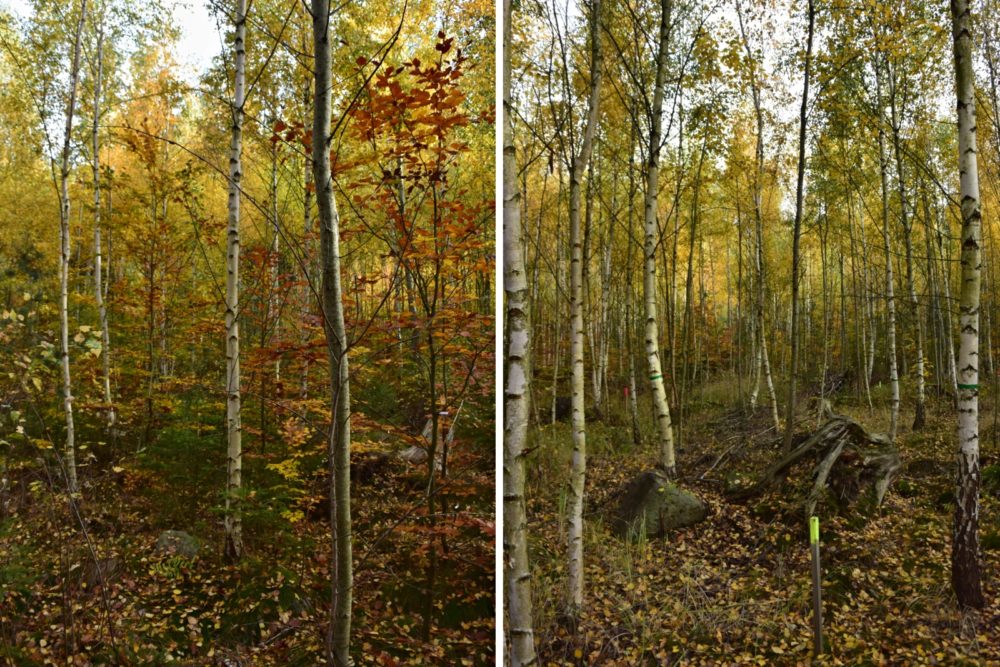 Photo: Preparatory forest stand with a growing focus on the production of quality assortments, FGMRI (VÚLHM) archive, Opočno Research Station
Photo: Preparatory forest stand with a growing focus on the production of quality assortments, FGMRI (VÚLHM) archive, Opočno Research Station
The preparation and establishment of a vegetation canopy are expected to have several benefits including reducing the impact of harsh climate conditions in open areas (such as direct sunlight, temperature extremes, and wind speed), restricting weed growth, and maintaining or improving soil conditions (including water regulation, root support, erosion prevention, and soil quality adjustment). Shading from the vegetation also reduces weed growth, making the habitat less attractive to rodents.
Preparatory tree species are those with rapid growth when young, capable of naturally thriving in harsh conditions of bare areas, and flourishing successfully despite challenges such as climate, sunlight, soil conditions, and competition from ground vegetation. Most preparatory tree species bear fruit frequently and abundantly. In the Czech Republic, the most commonly encountered preparatory tree species include birches, alders, poplars (especially aspen), hornbeam, willows (especially yew), and larch.
Research and practical experience indicate that white birch is the best tree for restoring disaster clearings. Sticky alder is a suitable option for areas affected by water. These tree species are promising because they can grow well even when there are more ungulates around.
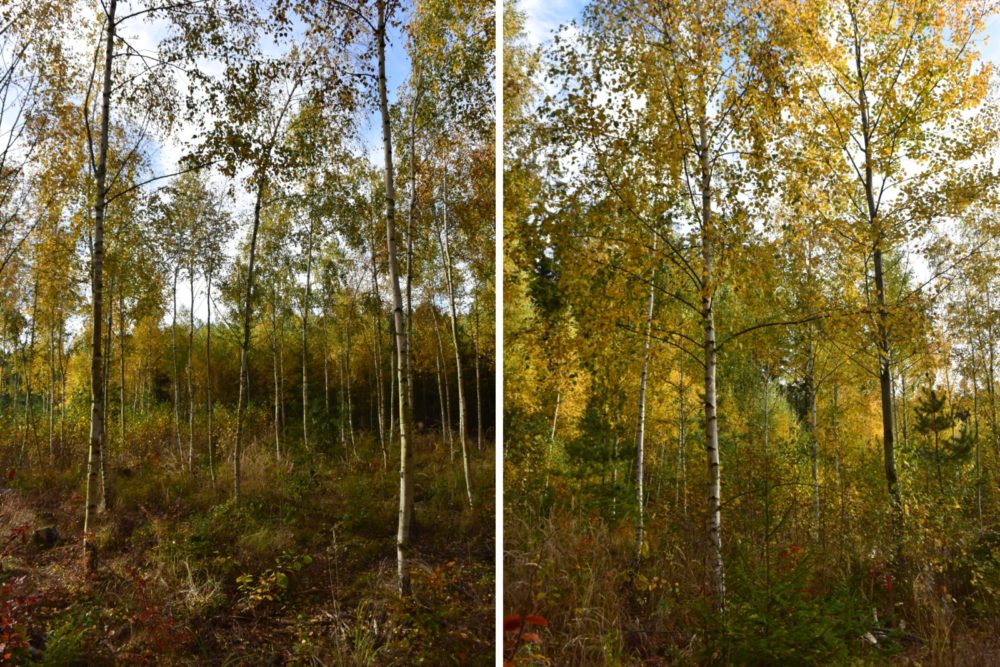 Photo: Preparatory forest stand supporting the lower floor of target tree species on the left, and a mixture with birch on the right, FGMRI (VÚLHM) archive, Opočno Research Station
Photo: Preparatory forest stand supporting the lower floor of target tree species on the left, and a mixture with birch on the right, FGMRI (VÚLHM) archive, Opočno Research Station
The microclimatic impact of the preparatory stand for crane species is limited. This tree species forms sparse stands. However, cranes have a positive effect on nutrient cycles.
Poplars and willows grow rapidly in height, creating a preparatory stand in a short time. Except for poplars, aspens, and willows, which dominate lower positions on sites with sufficient water supply in the soil profile.
The European larch has not been well-supported as a tree species in the preparatory forest in recent years. However, experience from immission locations shows its great potential for use as a preparatory tree species as well.
New insights into the role of early tree species in restoring cleared areas after disasters will help optimize their economic and ecological benefits. It is expected that by following these procedures, there will be variations in the age of the new stands that are currently developing on the cleared areas in the future.
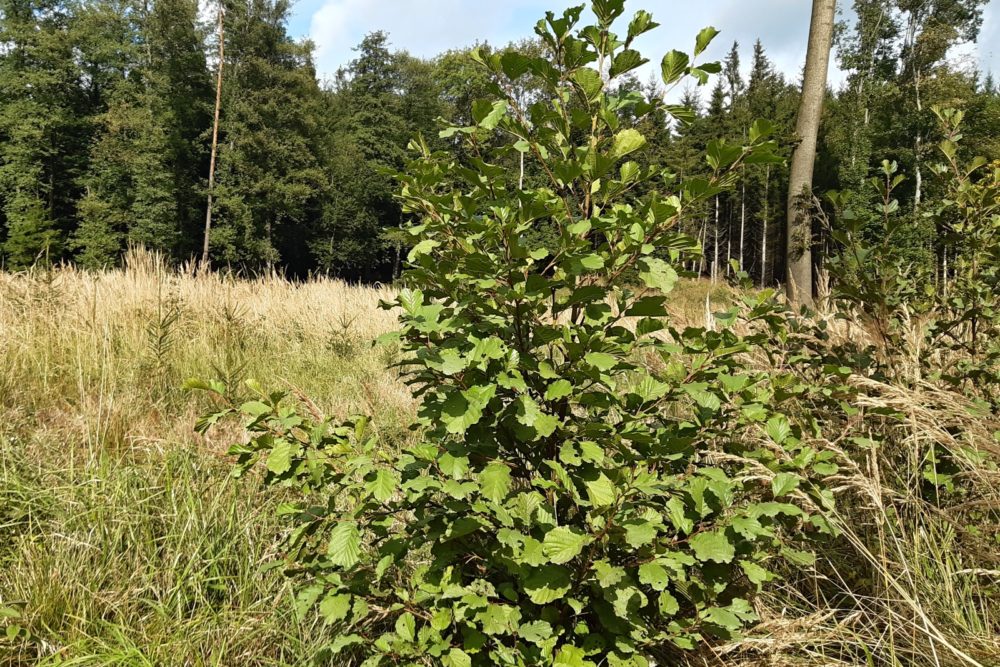 Photo: Alder on calamity clearing locality. FGMRI archive
Photo: Alder on calamity clearing locality. FGMRI archive
When using preparatory forest procedures on areas affected by bark beetle infestation, it is possible to achieve cost savings of approximately 10,000–50,000 CZK per hectare in forest restoration. Currently, there is a need to restore forests on around 80,000 hectares following the bark beetle infestation that occurred between 2017 and 2023. If these procedures are applied to 20% of the affected areas, the annual economic impact for forest management in the Czech Republic could reach up to 400 million CZK. Additionally, using these procedures allows for the spreading of restoration costs over a longer period following the infestation.
Another crucial factor is the impact of creating preparatory stands on habitats and other components of forest ecosystems. Most of the tree species suitable for establishing preparatory stands have a beneficial effect on the soil.
The use of preparative stands is crucial for the successful cultivation of sensitive woody species such as beech and fir, which do not thrive in open areas.
The procedures mentioned in this methodology can significantly improve forest stability in disaster areas, aiding in the adaptation of forest stands to climate change effects.
The methodology “Recovery of disaster clearings through preparatory forest” („Obnova kalamitních holin přes přípravný les“) methodology can be downloaded here.
Authors: Ing. Jan Leugner, Ph.D., Ing. Jiří Souček, Ph.D., Ing. Ondřej Špulák, Ph.D., FGMRI, Opočno Research Station (VÚLHM, v. v. i., VS Opočno), e-mail: leugner@vulhmop.cz, Ing. Antonín Martiník, Ph.D., MENDELU, Faculty of Forestry and Wood Technology (Mendelova univerzita v Brně, Lesnická a dřevařská fakulta), e-mail: antonin.martinik@mendelu.cz
Prepared by: Ing. Jan Řezáč, FGMRI (VULHM, v. v. i.), e-mail: rezac@vulhm.cz
